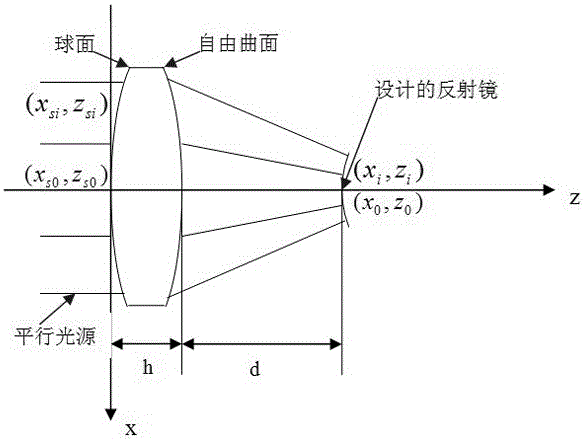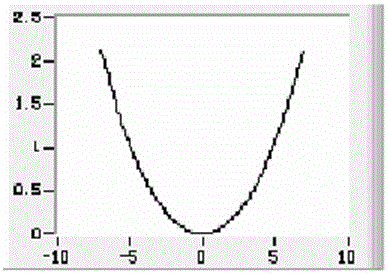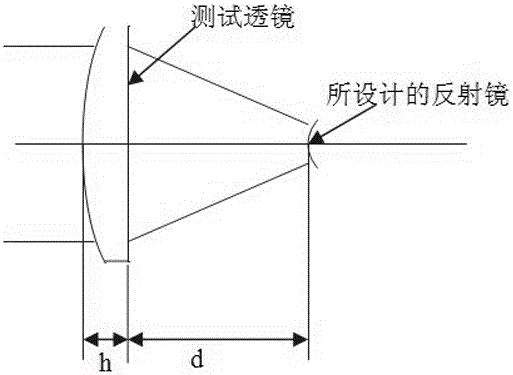A detection method for rotationally symmetric free-form surface lens
A technology of rotational symmetry and curved surface lens, which is applied in the direction of testing optical properties, can solve the problems of free-form surface detection, and achieve the effect of reducing material cost, short processing cycle and high detection accuracy
- Summary
- Abstract
- Description
- Claims
- Application Information
AI Technical Summary
Problems solved by technology
Method used
Image
Examples
Embodiment 1
[0023] In this embodiment, a reflector for detection is designed for a plano-convex lens with a diameter of 30 mm and a plano-convex lens with a high-order aspheric surface on one side. The equation of the high-order aspheric surface of the lens to be tested is:
[0024] ;
[0025] in:
[0026] c=1 / R
[0027] R=20.4
[0028] k=-1.035356
[0029] a2=5.685242e-006
[0030] a3=-7.934483e-010
[0031] a4=-3.635248e-012
[0032] a5=5.883743e-016
[0033] The remaining coefficients are 0;
[0034] The refractive index of the material is n=1.788.
[0035] See attached figure 1 , which is a schematic diagram of the design of the reflector used for the detection of the rotationally symmetric free-form surface lens provided in this embodiment; the specific implementation steps involved in the reflector are as follows:
[0036] 1. Use parallel light as the light source. The incident direction of the parallel light source is parallel to the Z-axis, and the incident direction...
PUM
 Login to View More
Login to View More Abstract
Description
Claims
Application Information
 Login to View More
Login to View More - R&D
- Intellectual Property
- Life Sciences
- Materials
- Tech Scout
- Unparalleled Data Quality
- Higher Quality Content
- 60% Fewer Hallucinations
Browse by: Latest US Patents, China's latest patents, Technical Efficacy Thesaurus, Application Domain, Technology Topic, Popular Technical Reports.
© 2025 PatSnap. All rights reserved.Legal|Privacy policy|Modern Slavery Act Transparency Statement|Sitemap|About US| Contact US: help@patsnap.com



